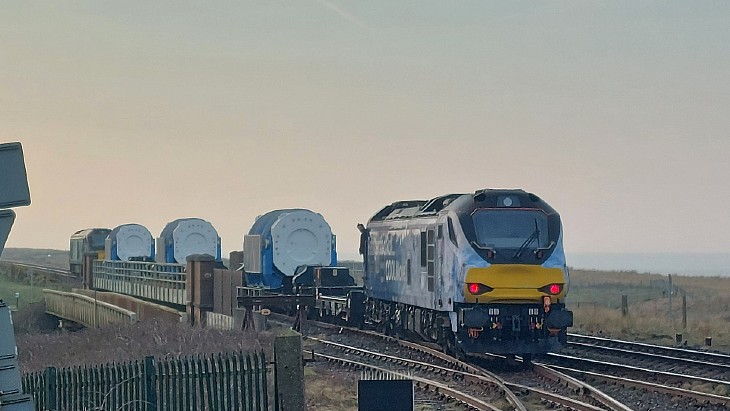'Keyhole surgery' for Sellafield waste retrieval
A complex remote cutting job is underway at Sellafield to enable the removal of cladding waste from an outdated silo. Engineers are using an innovative jet to remove plates of steel while maintaining an inert atmosphere important for safety.
The work is taking place at the Pile Fuel Cladding Silo, which contains cladding materials removed from fuel assemblies used in some of the UK's earliest reactors at Windscale and Chapelcross. Irradiated cladding had to be removed before used fuel assemblies could be reprocessed to recover the uranium and plutonium they contained for the purposes of the joint power and weapons nuclear program run by the UK in the 1950s and 1960s.
The concrete silo is based on facilities normally used to keep grain and was in operation from 1952 to 1964 with some other additions up to 1968. Since then it has remained in the status of 'care and maintenance', benefiting in later years from the removal of redundant structures for better seismic safety and the injection of inert argon gas to its six storage chambers. Now, the UK is determined to clean-up legacy nuclear facilities such as this.
_460x341.jpg) |
| The Pile Cladding Fuel Storage Silo. Deflector plates are shown in blue (Image: Sellafield) |
To remove the fuel cladding and dismantle the silo, engineers must first remove large metal deflector plates which served to ensure cladding waste was properly directed into the storage chambers when deposited from the transfer tunnel that originally ran along the top of the silo.
Gary Snow, head of the Pile Fuel Cladding Silo program, said: "Each of the deflector plates is about the size of a small car and welded firmly in a place. The engineers and operators are faced with the challenge of cutting up this metal jigsaw while also safely maintaining the silo's sensitive atmosphere which contains the inert gas argon to eradicate the risk of fire."
_460x307.jpg) |
| Workers test the procedure on a mock-up (Image: Sellafield) |
After making openings in the building's walls, engineers are cutting each of the six deflector plates into approximately 150 pieces each. They decided to use a cutting jet of water and finely ground stone "as an extra safety layer, even though any sparks would not be able to ignite in the argon atmosphere", said Sellafield Ltd.
"Removing the plates inside the silo is like keyhole surgery, but on an industrial scale," said Snow.
After cutting, the pieces of steel will fall into the storage chambers to be removed along with the cladding when that process begins, scheduled for 2020.
Snow said: "Sellafield Ltd, the Nuclear Decommissioning Authority and the nuclear regulators all have an understanding and acceptance that the retrievals process does involve the potential for small increases in risk, which we ensure are managed and mitigated, but it is more acceptable than the risk of leaving the waste in there any longer."
Researched and written
by World Nuclear News
_17992.jpg)
_75800.jpg)







..._58412.jpg)

